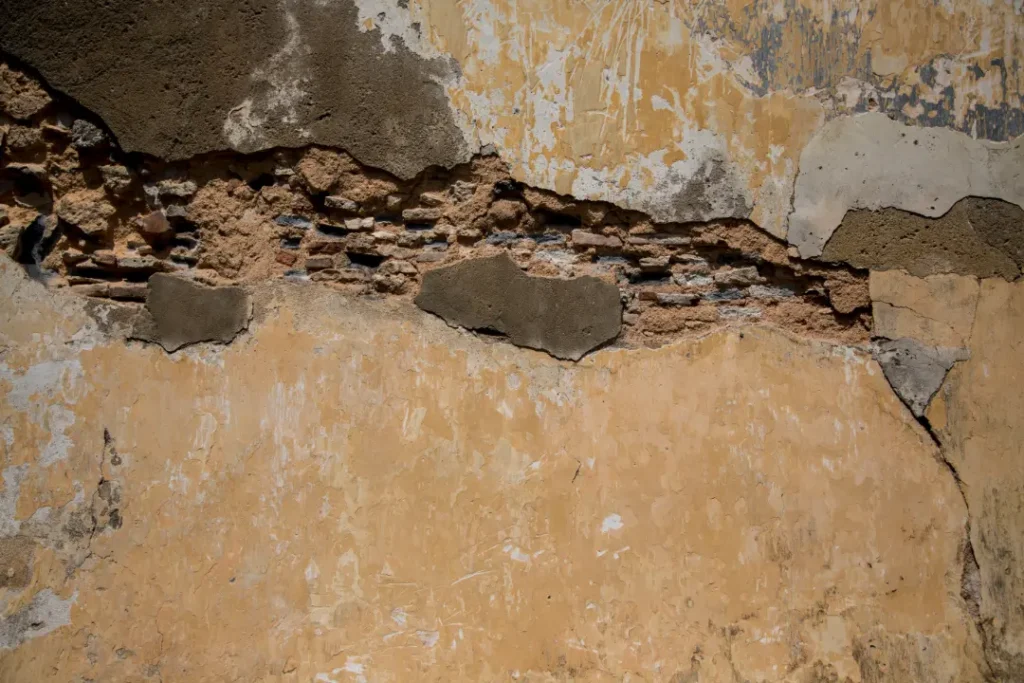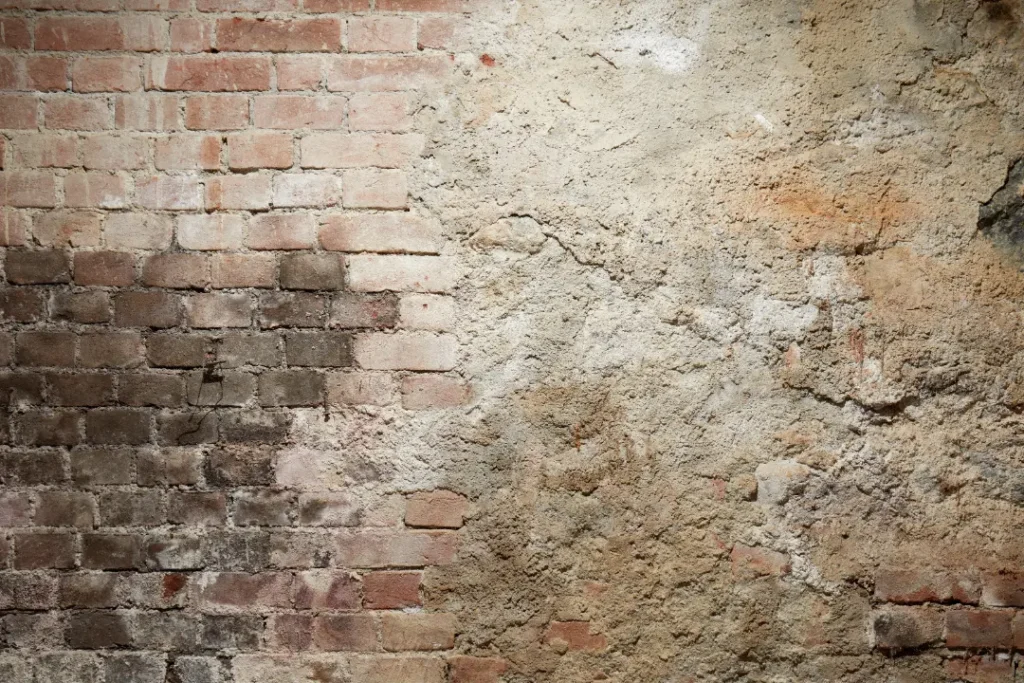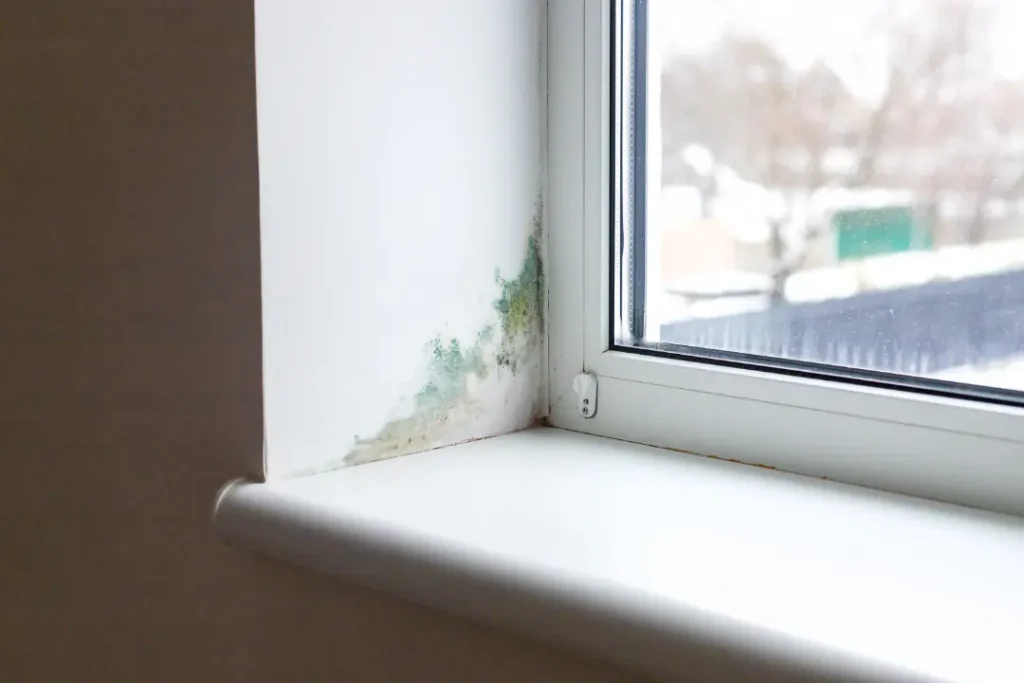Dealing with rising damp in old houses is crucial for maintaining structural integrity and a healthy living environment.
This article breaks down how to stop rising damp in old houses by helping you recognise its signs, understand its causes, and apply effective treatments.
Key Takeaways
- Rising damp occurs when moisture from the ground travels upwards through porous materials, leading to structural damage and potential health risks.
- Common signs of rising damp include damp patches on walls, peeling paint, cracked plaster, and musty odours; early detection is crucial for effective treatment.
- Effective solutions for rising damp include repairing or installing damp proof courses, enhancing ventilation, and conducting regular maintenance to prevent moisture issues.
What Is Rising Damp in Old Houses and Why Does It Happen?
The upward movement of moisture from the ground into a building’s walls, known as rising damp, occurs through the porous materials in these structures. This issue is often seen in older buildings where an original damp proof course (DPC) might be absent or has degraded over time.
In the absence of an effective DPC, water can rise within the small tubes present in substances like brickwork, stonework and lime mortar due to capillary action, which may result in significant damage to structural integrity.
As a consequence of rising damp:
- Mortar joints could lose their strength
- Plaster might begin crumbling away
- The stability of the home’s critical elements may decline
- Damage could occur to both the structure and appearance
- It can negatively affect interior design with paint peeling off and deterioration of decorative details
If not addressed promptly, the risks associated with escalating repair costs grow alongside potential health hazards for residents.
Early detection and rectification are imperative for avoiding expensive repairs down the line while ensuring that living spaces remain secure and enjoyable.

How to Identify Rising Damp in Old Properties: Key Warning Signs
Identifying early symptoms of rising damp is crucial in averting significant harm to your property. Typical signs are damp spots on walls, paint flaking away, plaster cracking, and a distinct musty smell.
Such indicators suggest not just the infiltration of excess moisture but also possible structural impairments, the presence of water droplets, and risks to health.
Damp Patches on Walls
Visible damp patches at the bottom of walls are a definitive sign of rising damp. These dark areas may extend upwards for over a meter, marked by tide marks created by salt deposits created by evaporating moist air. Swift recognition is key to averting additional complications related to damp.
These patches signal that moisture has infiltrated through the wall, potentially leading to an exacerbated problem with damp if left unattended.
The extent of this wetness and its electrical resistance can be measured using electrical moisture meters to determine proper remediation strategies.
Peeling Paint and Cracked Plaster
Cracked plaster and flaking paint on walls often indicate that they have been exposed to moisture for an extended period. This deterioration results from the absorption of moisture due to rising damp, which undermines the ability of paint to stick and leads to crumbling plaster. Typically, this is also marked by a noticeable darkening in these areas, clearly pointing towards a problem with damp.
Addressing such issues promptly can prevent more severe damage. The unsightly appearance of peeling paint and cracks in your home’s walls detracts from its visual appeal and may indicate deeper moisture problems that can compromise your walls’ structural integrity.
Musty Odor
The emergence of a musty smell in your residence can be a key sign of rising damp, which is typically associated with the proliferation of mould and mildew due to wet conditions. These organisms generate foul odours and present potential health hazards, especially for individuals who have respiratory issues or suffer from allergies.
When moisture ascends through walls, it creates an optimal setting for mould growth and mildew to flourish. This process results in fungal expansion, which contributes to persistent musty odours throughout the home.
Causes of Rising Damp in Older Houses
Rising damp is a frequent issue in older properties, often attributed to their distinct construction techniques and materials. These period homes, encompassing ancient buildings and antiquity residences, frequently lack an adequate damp proof course (DPC) or suffer from the degradation of any original DPC with time. This leaves them prone to moisture seeping through.
The solid walls found predominantly in properties dating back to early Victorian times are notorious for promoting condensation since they typically remain cooler and trap moisture within an ageing building’s structure.
The traditional use of more permeable materials, such as stone, brick, and lime mortar, also facilitates greater moisture absorption compared to contemporary substances utilised in new constructions, complicating matters.
Modern refurbishments use non-breathable materials that can trap moisture inside wall structures, which exacerbates dampness issues in these environments. Additional factors, such as poor drainage systems combined with external modifications like elevated garden beds, may unintentionally redirect water toward structural walls, increasing the risks of rising damp.
Modifications, including extensions that evade existing measures designed for damp-proofing, can also initiate incidents involving rising damp across historic dwellings. To safeguard heritage homes from succumbing under these conditions, it necessitates ongoing maintenance centred on preserving functional integrity around DPC while ensuring efficient handling concerning drainage systems.

How to Treat Rising Damp in Old Houses: Best Repair Methods That Work
Effectively addressing rising damp requires pinpointing the moisture’s origin, fixing or putting in place damp-proof courses, and tackling any related structural problems. A range of techniques can be used, from chemical solutions to establishing physical barriers. These methods are tailored to varying situations and levels of severity when it comes to treating rising damp and ensuring effective damp treatment overall.
Replacing or Repairing the Damp Proof Course
A damp proof course serves as a critical shield to inhibit moisture from ascending through the walls of a building. In older residences, it’s possible that this protective layer is absent or has sustained damage, making repair or renewal necessary.
To form a fresh barrier against moisture, one widespread technique involves boring holes in the wall and instilling a structural waterproofing treatment. This approach proves highly successful for addressing issues related to rising damp and existing damp courses.
Nevertheless, setting up a DPC should be entrusted to skilled professionals. Improper installation could exacerbate problems and incur additional expenses. At times, more aggressive measures might be essential, including stripping away up to two layers of bricks to adequately fit in a new DPC.
Using Damp Proofing Cream to Stop Rising Damp Effectively
Administering damp proofing cream serves as a powerful solution for combating rising damp. This substance is applied into pre-drilled openings within the mortar lines, allowing it to infiltrate the brickwork and create an impervious barrier against moisture. Typically comprised of silane, this key component coats the internal pores of the wall structure to stop upward moisture movement.
The technique involving damp proofing cream is notably less disruptive and proves highly efficient if executed properly. Meticulous preparation steps are crucial, such as eliminating any plaster impaired by damaged damp proof barriers and making certain that brick surfaces are left dry and uncovered before application.
Protecting Your Walls with Damp Proof Paint
A silicone-based damp-proof paint serves as a barrier to stop moisture from permeating walls, making it an effective solution for combating rising damp. By creating a protective layer with this paint, mould and mildew growth are suppressed, safeguarding the structural health of the walls.
It’s important to choose appropriate damp-proof paint tailored to your property’s age and state. Seeking professional guidance is advisable to guarantee that this paint delivers optimal protection against moisture and is applied correctly.
Protect Your Home with London’s Damp Proofing Specialists
Environ Property Services is London’s trusted expert in stopping rising damp in old houses. With decades of hands-on experience, we provide targeted, effective damp proofing solutions that restore the integrity of your home and protect your family’s health.
Whether your property needs a chemical damp proof course, timber replacement, structural repair, or full basement waterproofing, our team delivers a full-service approach using Sovereign-approved products, the highest standard in the UK market.
Here’s what you can expect when you work with Environ Property Services:
- Meticulous damp survey to assess your property
- Honest diagnosis and evidence-based reports before any work begins
- Expert treatment of rising damp, lateral damp, penetrating damp, and condensation
- Installation and repair of damp proof courses (DPCs) and membranes
- Affordable PIV ventilation units to tackle moisture and mould
- And more.
We understand the unique challenges of heritage buildings and treat each property with the attention it deserves. We investigate thoroughly, using proven methods to detect and stop rising damp at its source.
We’re a family-run business, and our commitment to integrity, quality, and customer-first service has earned us the trust of hundreds of London homeowners.
Call us now on 020 4538 3286 to book your damp survey.
How to Improve Ventilation in Old Homes to Prevent Damp Issues
Enhancing home ventilation is vital to prevent dampness. Adequate ventilation can help reduce condensation and allow moisture levels from activities like cooking and bathing, which can otherwise contribute to poor ventilation and damp conditions, including water vapour.

Installing Air Bricks
Air bricks play a crucial role in promoting air flow under timber ground floors and within wall cavities, reducing the accumulation of moisture and staving off damp-related complications that might manifest around the skirting board area.
These elements must be positioned thoughtfully to optimise ventilation, especially under floorboards where damp is prone to develop.
It’s essential to install these air bricks above the exterior ground level, as this practice safeguards against water entering during bouts of heavy rainfall. By doing so, enhanced ventilation can be achieved without inviting moisture problems into your home. For efficient control over such issues, one should undertake the installation of air bricks.
Using Dehumidifiers
Dehumidifiers are efficient devices for managing the moisture content in a residence’s air. By reducing relative humidity, they make interior environments less conducive to mould proliferation and diminish the likelihood of dampness. This is especially important in areas that are naturally susceptible to moisture, such as basements, bathrooms, and kitchens.
Positioning dehumidifiers strategically in areas where moisture accumulates enhances their efficacy.
Continuous operation can enhance indoor air quality by sustaining ideal humidity levels while averting musty smells that typically accompany humid air, moist atmosphere, excessive dampness, and dew point convergence.
Why Regular Maintenance Is Key to Preventing Rising Damp
It’s crucial to carry out ongoing maintenance and checks to detect and tackle possible damp problems early on, particularly by observing the state of surfaces and materials adjacent to damp walls and quickly fixing any deterioration.
Professional Damp Surveys
A comprehensive damp survey is the first step in effective treatment. Professional damp surveyors use tools like moisture meters and humidity gauges to assess dampness and identify core causes.
A thorough damp survey pinpoints affected areas, structural concerns, and environmental variables, providing a clear treatment and prevention plan.
This proactive approach can save homeowners from costly repairs and extensive damage.
Fixing Leaky Roofs to Stop Water Damage and Rising Damp
It’s critical to maintain the condition of roofing components, including tiles and flashing, to avert water from seeping in and causing damp problems. Fixing rainwater pipes that are not functioning properly, such as gutters and downspouts, is imperative to prevent overflowing water, which can result in moisture accumulation within walls and ceilings.
Conducting routine checks on areas where roof planes intersect (valleys) and on flat roofs can reveal issues likely to allow water entry.
Swiftly dealing with damaged or absent roof tiles is vital for preserving the integrity of the roof’s waterproof shield, safeguarding both the structure’s external walls and internal walls against complications associated with a leaky roof and damp conditions.
Contact Environ Property Services Today
Environ Property Services is renowned for its outstanding professionalism, dependability, and ethical conduct. We are dedicated to achieving exemplary standards in every project we undertake. Our commitment to preserving architectural history goes hand in hand with our innovative solutions for preventing dampness, highlighting our distinction within the industry.
We offer personalised consultations to identify specific moisture issues and provide tailored advice and strategies to meet individual needs. Our team specializes in executing sensitive heritage operations, structural reinforcements, and comprehensive renewal of stone and brickwork, including lime rendering, all aimed at preserving the historical significance and charm of each property.
Frequently Asked Questions
What are the common signs of rising damp in an old house?
Common signs of rising damp in old houses include damp patches on masonry walls, peeling paint, cracked plaster, and musty odours, all of which indicate moisture penetration that could lead to mould growth.
How can I treat rising damp effectively?
For an effective rising damp treatment, identify the source of moisture, repair or install a damp proof course, and apply damp proofing cream followed by damp proof paint, preferably with professional help.
This comprehensive approach will help mitigate the problem efficiently.
Why is ventilation important in preventing damp?
Ventilation is crucial in preventing damp. It lowers moisture levels from everyday activities, thereby inhibiting mould growth and potential structural damage.
Maintaining good airflow helps protect your living environment.
What role do damp surveys play in managing damp issues?
Surveys focused on dampness are essential for correctly identifying the severity and sources of moisture within a building, which allows appropriate corrective measures to be implemented.
These evaluations offer a comprehensive strategy to resolve problems before they worsen, thereby safeguarding your property investment.
How can Environ Property Services help with damp issues in heritage buildings?
Environ Property Services effectively addresses damp issues in heritage buildings by combining traditional skills with modern technology for specialised damp proofing and restoration.
This approach ensures the preservation of historical architecture while resolving damp problems.
Conclusion
Recognising the signs, comprehending the causes, and applying effective methods to combat rising damp are essential for preserving the structural soundness and visual charm of older homes. Early detection allows property owners to defend their estates against severe damage that could lead to expensive repair work.
Proactive strategies such as improving air circulation, consistently checking the property’s condition, and enlisting specialised assistance from firms like Environ Property Services can significantly keep residences secure, hygienic, and aesthetically pleasing. To maintain your home’s value, take immediate steps against the threats posed by rising damp.

